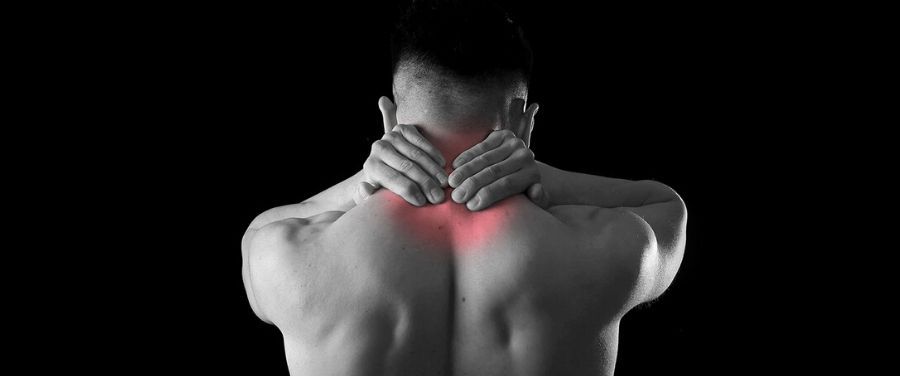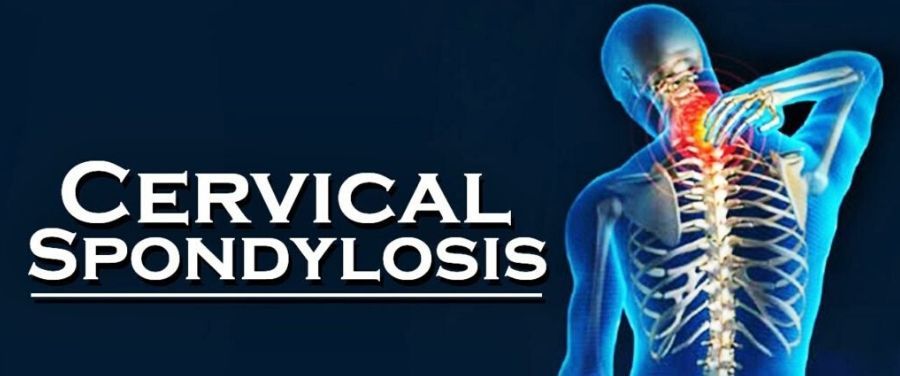WHAT IS CERVICAL SPONDYLOSIS?
Cervical spondylosis is a common condition in which the vertebrae, discs and ligaments in the neck or cervical spine become worse. It is also known as cervical osteoarthritis, arthritis of the neck or the degenerative osteoarthritis. The disease is increasing day by day in the number of people. It is often associated with age and becomes advance with the age. Both men and women are affected equally with this disease, but this problem begins earlier in men.
In some cases, symptoms may be loss of feeling and coordination. Some people may also have difficulty in walking. The number of people with the complaints of shoulder and neck pain referred to as cervical spondylosis is mounting significantly day by day. The patients suffering from cervical spondylosis approach doctors for a permanent solution, which is often elusive.
People with an age over 40 years are more prone to the symptoms of cervical and it advance with the age. CS (cervical spondylosis) is also identified as cervical osteoarthritis which is referred to decay of the vertebrae and disks in the neck as we get older, particularly the cervical spine, which is the part of a spine in the neck.

The edges of the vertebrae, time after time develop small, rough portions of bone called the osteophytes. CS is caused by chronic wear on cervical spine. It includes the disks or cushions between neck vertebrae and joints between bones of the cervical spine.
There may be abnormal growths or spurs on bones of the spine. These changes can, over time, press down on (compress) one or more of nerve roots. In advanced cases, the spinal cord becomes involved. This can affect not just arms, but also the legs. Every day wear and tear may start these changes.
People who are very active at the work or in the sports may be more likely to have them. Cervical spondylosis causes may include genetical background and injury of the neck. Symptoms may include neck stiffness, numbness or abnormal sensations in the shoulders, legs, or arms, headaches, especially in the back of the head.
Apart from physical exercise, yoga and medication plays an important part in decreasing the problem of cervical spondylosis. You should consume a proper diet to maintain your bones and joints in a healthy condition. Veg and non-veg both diets has their unique roles in maintaining the bone mineral metabolism of your body.
Vegetarian diets do offer substantial protection from joint and bone disease provided adequate care is taken to meet daily protein, calcium and vitamin requirements. Analysis of available data shows that vegetarian diet prevents the progression of shoulder and neck pain and the demineralization of bones due to the high fiber, mineral and vitamin contents and also low acid content.
CERVICAL SPONDYLOSIS: FAST FACTS
- Nearly 85% of people over the age of sixty years live with cervical spondylosis, but not all of them experience the pain.
- A range of neck-stretching exercises can help to relieve the stiffness and pain.
- Muscle relaxants, physical therapy and steroid injections can help to ease the cervical symptoms. In severe cases, surgical options are also available.
- Cervical symptoms can include pain and weakness. In some cases, the disc can press on a nerve and cause loss of consciousness and mobility issues.
- It usually starts to appear after the age of 40, and it progresses over time. Men usually develop it at an earlier age than the women.
WHAT CAUSES CERVICAL SPONDYLOSIS?
Smoking may also increase the risk. Cervical Spondylosis causes include —
Age:
Cervical Spondylosis is often associated with age. While only less than 25 percent of people below the age of 40 years experience Cervical Spondylosis, about 60 percent or more above the age of 40 years are affected by this disease. The major risk factor is aging. Cervical spondylosis progresses with the age and often develops at multiple interspaces. Both men and women are affected equally, but problems begin earlier in males.
Genetics:
Some researchers say that spondylosis can be genetic cause because the condition sometimes runs in families.
Although the role of genetics is yet to be confirmed, the people with the age above fifty years who experience the condition, are more likely to have a sibling with the normal or mild conditions of this disease.
Herniated Discs:
The inter-vertebral disks are made up of two concentric layers, the inner gel such as annulus pulposus and the outer fibrous annulus fibrosus. As a result of advancing age, the nucleus looses fluid, resiliency, volume and entire disc structure becomes more susceptible to compression and trauma. This condition is known as dehydration of the disc.
Then, the disc is highly vulnerable to tears and as these occur, the inner annulus pulposus protrudes through fibrous layer, producing a bulge in inter-vertebral disc. This condition is known as herniated disc. This can then cause compression to spinal cord or the emerging nerve roots and lead to the associated problems.
Neck Injury:
A previous neck injury may also lead to the condition. Neck injury which may have occurred years back can predispose to CS. Other precipitating factors such as trauma, incorrect body posture and excessive intake of sour food (according to Ayurveda), can trigger cervical attacks.
If the cartilage wears away completely, it can result in the bone rubbing on bone. To make up for the lost cartilage, the body may respond by growing the new bone in the facet joints to help to support the vertebrae.
Over the time, this bone overgrowth, called spurs, may narrow the space for nerves to pass through (stenosis).
Work Activity:
Some long-term activities may increase the risk of developing this disease, such as carrying heavy loads, practicing martial arts, or being a gymnast or professional dancer. Cervical Spondylosis is often found among the people who carry heavy loads on their shoulders or head, than those who do not.
Another crucial factor is doing work that puts pressure on the neck region, like gymnastics, lifting heavy loads, etc. Other factor may include the work environments that require a person to work in one position, usually bending for long periods of time. In short, any activity that puts the undue stress on your neck for prolonged periods can cause the cervical spondylosis.
Some examples are watching television seated at an odd position that puts pressure on your neck, sleeping while seated, travelling for long distances and working the phones for long hours, etc. Use of very soft sleeping mattresses, incorrect sleeping postures can also lead to cervical spondylosis disease.
WHAT ARE THE SYMPTOMS OF CERVICAL SPONDYLOSIS?
Common symptoms of cervical spondylosis include pain in the neck which later radiates to shoulder or arms, stiffness in the neck region, weakness on the legs and arms, numbness of arms, legs or shoulders, headaches (on the back of the head), loss of balance, muscle spasms, loss of control over bladder or bowel movements, anxiety and general tiredness.
Symptoms often develop slowly over time, but they may start or get increase suddenly. The pain may be mild or deep and so severe that you are unable to move. You may feel the pain over the shoulder blade or it may spread to forearm, upper arm, or (rarely) fingers. The pain may get increase —
- After standing or sitting
- When you sneeze, cough, or laugh
- At night
- When you bend the neck backwards or walk more than a few yards
You may also feel some weakness in the certain muscles. Sometimes, you may not notice the weakness until your doctor examines you.
In other cases, you will notice that you’ve a hard time lifting your arm, squeezing tightly with one of your hands, or other problems. Other common symptoms are —
- Neck stiffness that gets worse or increase over the time
- Headaches, especially in the back of the head
- Numbness or abnormal sensations in the arms, shoulders, or (rarely) legs
WHAT ARE THE TREATMENTS OF CERVICAL SPONDYLOSIS?
Cervical spondylosis disease is usually symptomless. When cervical symptoms do occur, they tend to resolve over the time, often without treatment.
If the symptoms occur, then treatment can help to reduce the impact.
Muscle relaxants are useful if you have neck spasms, in which your neck muscles tighten suddenly. Options may include cyclobenzaprine and similar muscle relaxants. Antidepressants, such as amitriptyline, can sometimes help to relieve the persistent pain that has not responded to other treatments. Gabapentin is another option.
A steroid injection in your neck may help with very severe pain. Examples of steroid injections include —
- a trigger-point injection which can be done in a physician’s office
- a facet joint injection
- a cervical epidural steroid injection (ESI)
Physical therapy can also help alleviate symptoms.
CERVICAL SPONDYLOSIS EXERCISES:
You can treat cervical spondylosis with simple neck exercises, under the guidance of a doctor. A cervical patient can ease the symptoms with a few simple neck exercises, including:
Neck Stretch:
- Keep the body straight.
- Push the chin forward in a way that stretches the throat.
- Softly tense the neck muscles.
- Hold it for five seconds.
- Return the head to its center position.
- Push the head back with the chin held high, and hold for five seconds.
- Carry out 5 repetitions.
Neck Tilt:
- Tilt the head forward so that the chin touches the chest.
- Softly tense the neck muscles.
- Hold this for five seconds.
- Return the head to a neutral position.
- Carry out five repetitions.
Neck Tilt (Side-to-Side):
- Lean the head down towards either shoulder, leading with the ear.
- Softly tense the neck muscles.
- Hold this for five seconds.
- Return the head to the center and repeat on the other shoulder.
- Carry out five repetitions.
Neck Turn:
- Turn the head to one side as far as it remains comfortable, being sure to keep your chin at a level height.
- Tense the neck muscles for five seconds.
- Return the head to a central position.
- Repeat on the opposite side.
- Repeat this exercise five times on each side.
These exercises can help you to moderate the impact of the condition and alleviate pain or the feelings of stiffness. However, they will not cure cervical spondylosis.
RELATED ARTICLES:
